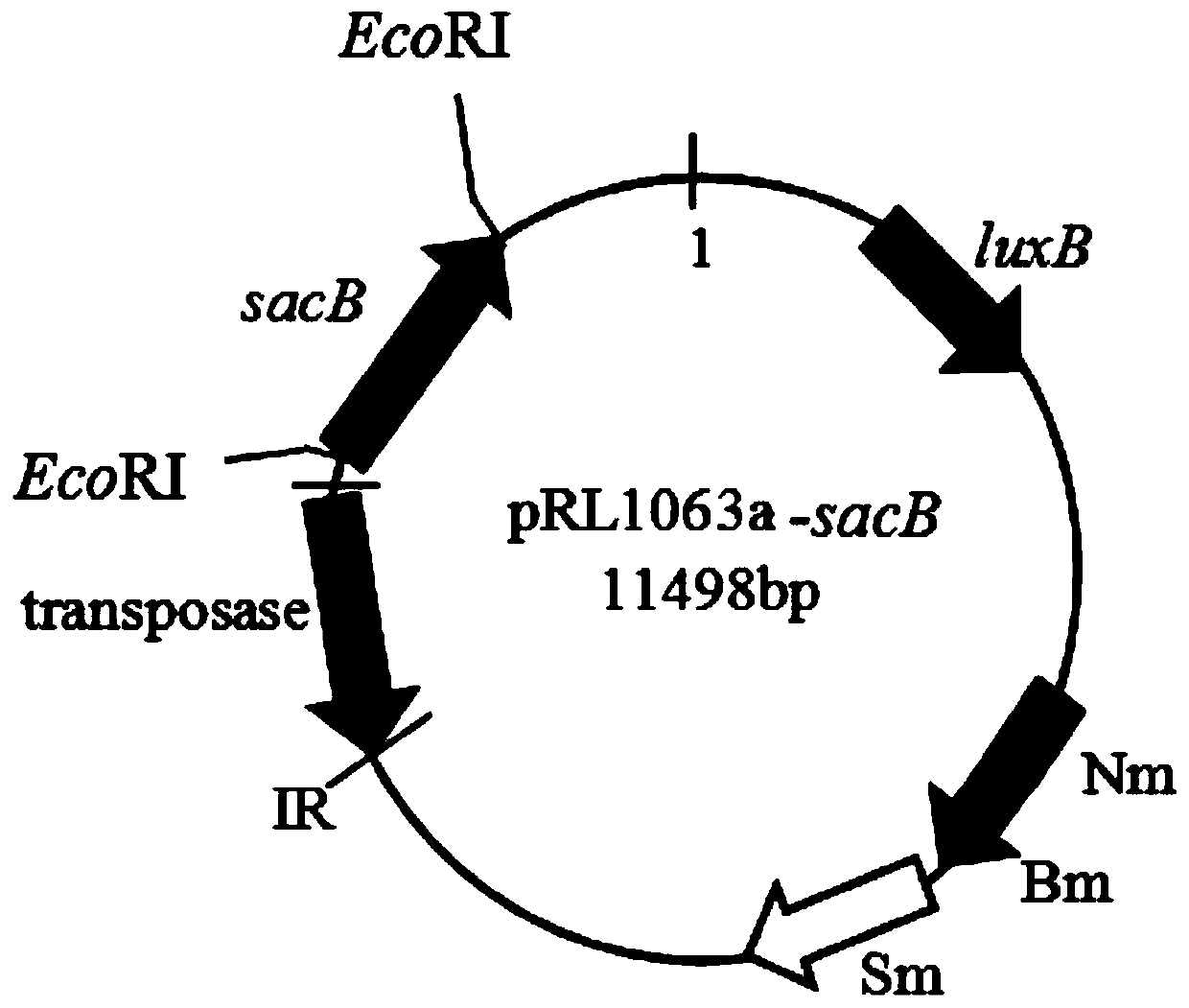Method for improving transposition efficiency of transposons in super-slow-growing rhizobium arachis
A technology of ultra-slow growth and rhizobia, applied in the biological field, can solve problems such as hindering cell material exchange, cell toxicity, cell death, etc.
- Summary
- Abstract
- Description
- Claims
- Application Information
AI Technical Summary
Problems solved by technology
Method used
Image
Examples
Embodiment 1
[0056] Embodiment 1, the acquisition of recombinant plasmid pRL1063a-sacB
[0057] 1. Extraction of pRL1063a plasmid and pJQ200SK plasmid
[0058] 1. Inoculate a single colony of Escherichia coli containing the pRL1063a plasmid into 5 mL of LB liquid medium, shake overnight at 37°C at 180 rpm, and then centrifuge at 12,000 rpm for 1 min to collect the cells.
[0059] 2. After completing step 1, take the bacteria, use the plasmid mini-extraction kit and follow the instructions to extract the plasmid, and obtain A 260 / A 280 pRL1063a plasmid solution with a concentration of 1.8-2.0 and greater than 34ng / μL (the solvent is ddH 2 O).
[0060] 3. Inoculate the single colony of Escherichia coli containing the pJQ200SK plasmid into 5 mL of LB liquid medium, shake overnight at 37°C at 180 rpm, and then centrifuge at 12,000 rpm for 1 min to collect the cells.
[0061] 4. After completing step 3, take the bacteria, use the plasmid mini-extraction kit and follow the instructions to e...
Embodiment 2
[0086] Embodiment 2, establishment of bradyrhizobium peanut three-parent hybridization method
[0087] 1. Establishment of three-parent hybridization method of Bradyrhizobium peanut and analysis of Tn5 transposition efficiency of inserting Tn5 transposon into Bradyrhizobium peanut CCBAU 53363
[0088] The recipient bacterium was Bradyrhizobium peanut CCBAU 53363. For the colony morphology of Bradyrhizobium peanut CCBAU 53363 see image 3 .
[0089] The donor bacterium is the Escherichia coli containing the recombinant plasmid pRL1063a-sacB prepared in Example 1.
[0090] The auxiliary bacteria are Escherichia coli containing the auxiliary plasmid pRK2013.
[0091] The inventor of the present invention has established a three-parent hybridization method for Bradyrhizobium peanut through a large number of experiments. Specific steps are as follows:
[0092] 1. Inoculate the recipient bacteria on TY solid medium and culture at 28°C for 14 days to obtain activated recipient b...
PUM
 Login to View More
Login to View More Abstract
Description
Claims
Application Information
 Login to View More
Login to View More - R&D
- Intellectual Property
- Life Sciences
- Materials
- Tech Scout
- Unparalleled Data Quality
- Higher Quality Content
- 60% Fewer Hallucinations
Browse by: Latest US Patents, China's latest patents, Technical Efficacy Thesaurus, Application Domain, Technology Topic, Popular Technical Reports.
© 2025 PatSnap. All rights reserved.Legal|Privacy policy|Modern Slavery Act Transparency Statement|Sitemap|About US| Contact US: help@patsnap.com



